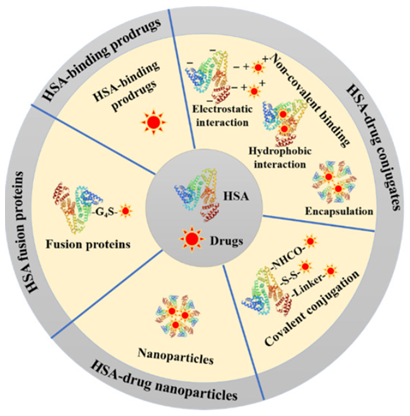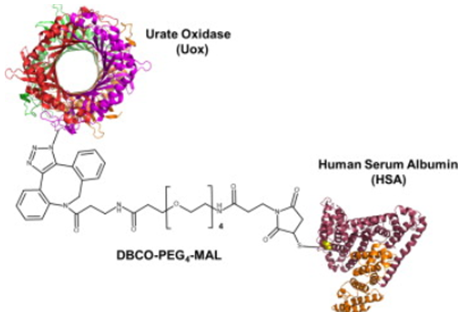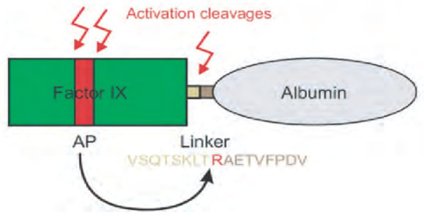Human serum albumin (HSA) is the most abundant soluble protein in human plasma, which is composed of 585 amino acids with a molecular weight of about 66.5 kDa. The half-life of HSA in human body is about 19 days. Additionally, it has the advantages of safety, non-toxicity, good biocompatibility and low immunogenicity. HSA is an ideal drug carrier, so it can be used for the long-term transformation of protein or polypeptide drugs by chemical modification or gene fusion. In 2014, FDA approved the first HSA fusion protein drug, albighztide (tanzeum), which is a DPP-4-resistant GLP-1-HSA fusion protein. HSA fusion protein as therapeutics plays an important role in drug development, especially in cancer therapy.
 Figure 1. Overview of various HSA-based cancer therapeutics (Tao H Y, et al. 2021).
Figure 1. Overview of various HSA-based cancer therapeutics (Tao H Y, et al. 2021).
There are several benefits that HSA fused to polypeptides or other therapeutics:
Based on our state-of-the art facilities, experiences, Profacgen can provide our customer of the HSA fusion service involved in hormones, growth factors, cytokines and peptides etc. Besides, except for gene fusion expression, we can also provide coupling services of HSA with therapeutics through covalent chemical bond or noncovalent bond.
 Figure 2. Schematic representation of Uox-HSA conjugate (Powell J S. et al. 2015).
Figure 2. Schematic representation of Uox-HSA conjugate (Powell J S. et al. 2015).
 Figure 3. Recombinant factor IX-albumin fusion protein with a cleavable linker (Lim S I, et al, 2015)
Figure 3. Recombinant factor IX-albumin fusion protein with a cleavable linker (Lim S I, et al, 2015)
With our in-house platform, Profacgen can develop HSA fusion modification methods according to the characteristics of protein or peptide drugs.
If you are interested in our services, please feel free to contact us . We are looking forward to cooperating with you.
References
Fill out this form and one of our experts will respond to you within one business day.